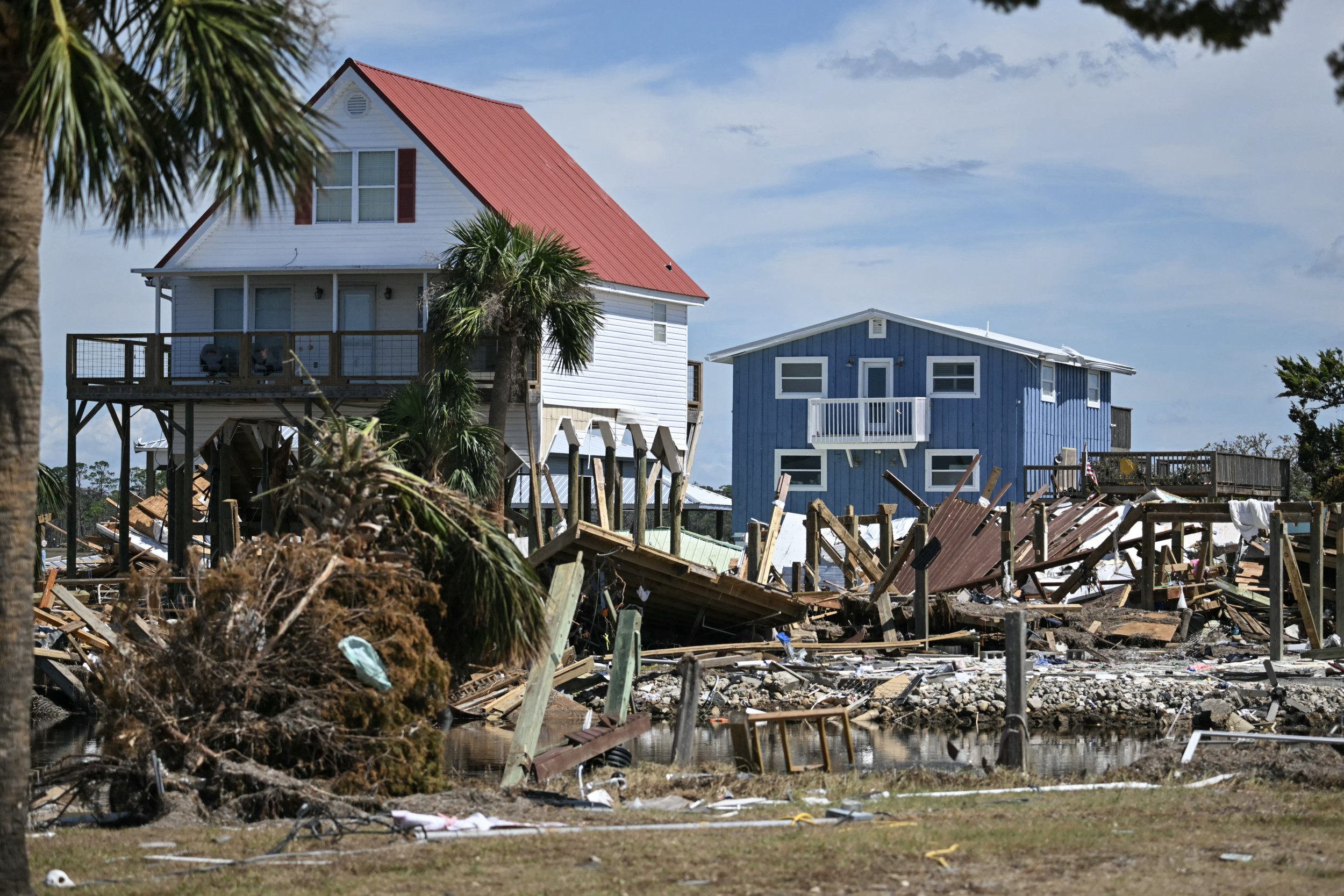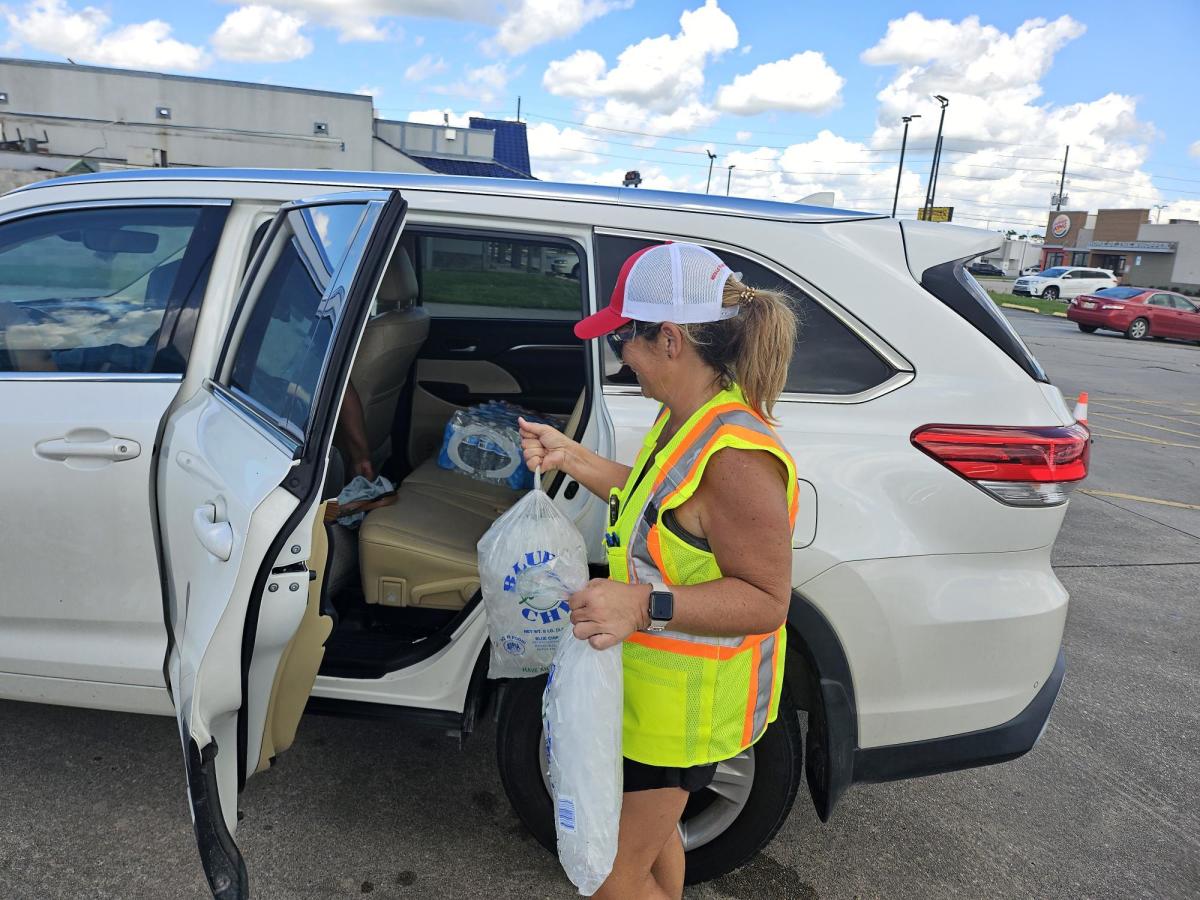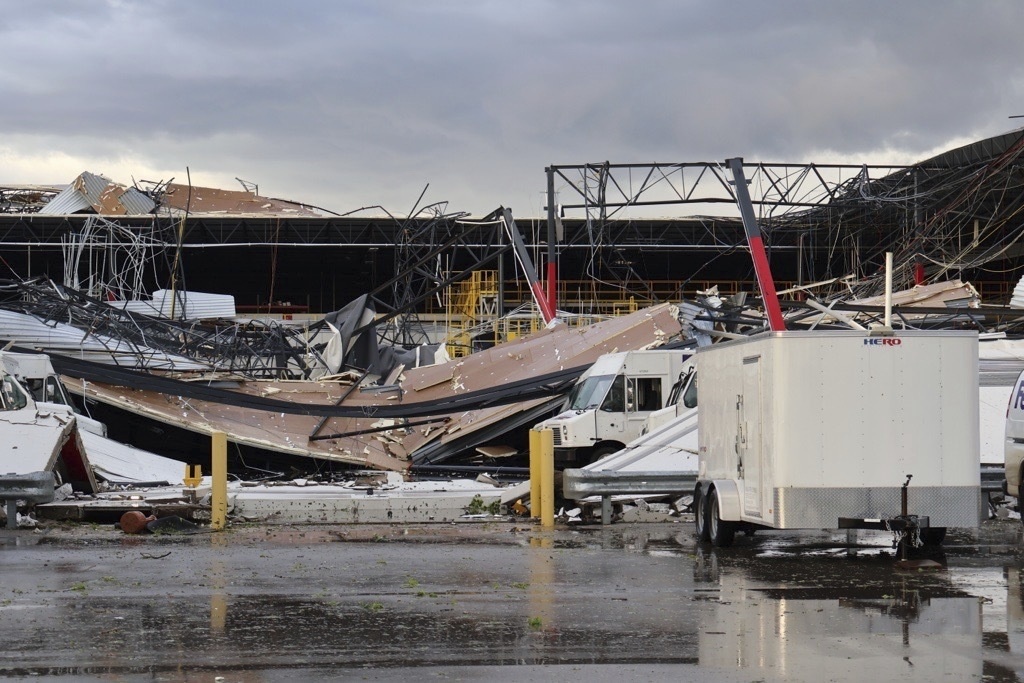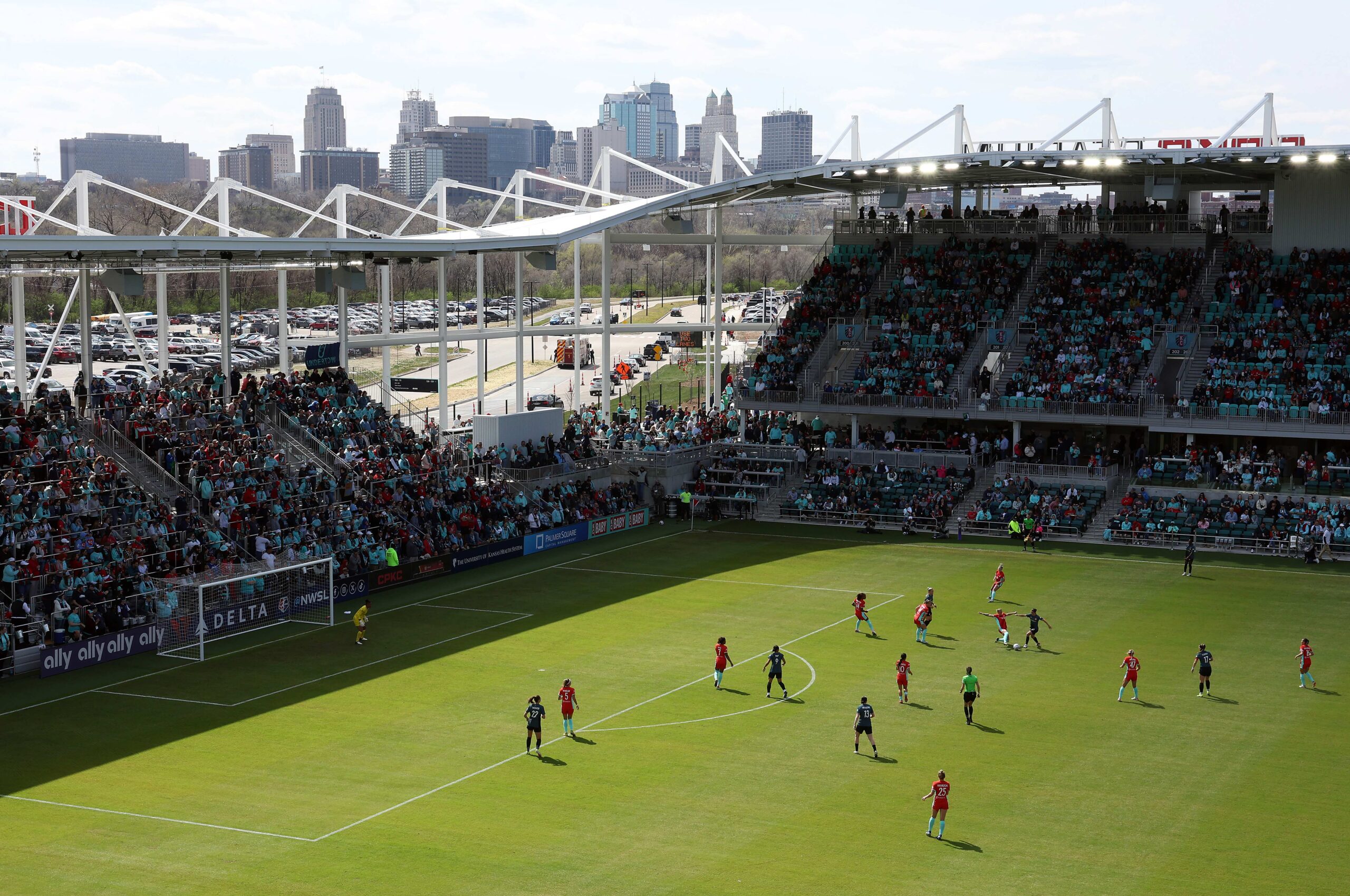Oregon
Oregon homeowners face soaring premiums, few property insurance options over wildfires – Oregon Capital Chronicle

Nancy Matela co-owns a vacation home in a wildfire zone northwest of Bend that has a new, annual property insurance premium of $9,000. It’s more than nine times what the company Safeco charged her a year ago.
That policy remains her only option as well: Her broker couldn’t find her another one.
Matela is among a growing number of homeowners in central, southern and eastern Oregon who have faced higher annual premiums or had their policies canceled when they came up for renewal, with some insurers no longer writing new policies. That change came after the 2020 Labor Day Fires destroyed more than 4,000 homes, becoming the state’s most expensive natural disaster in history, according to state and federal emergency response agencies.
Since then, insurance markets in parts of Oregon have begun to look more like those in California, where some of the largest insurance companies in the country are no longer renewing or writing new policies, and where the number of people turning to a state-backed insurer of last resort has doubled in recent years.
“If you want to know what the next five years look like in Oregon, look at southern California,” said Perry Rhodes, who has sold property insurance policies for Farmers in Bend for the last two decades. “If you want to know what this looks like if things get even worse, look back east to Florida,” he added. Farmers announced last year it would limit new property insurance policies in California and no longer sell any new property policies in Florida.
Rhodes said it used to be extremely rare to find a customer whose property was at such a high risk that he had to refer them to other companies. Now, he said, he sends about half of potential customers to other insurers because Farmers won’t cover them.
“The only homes that we know for sure are going to be eligible are the ones that are, so to speak, right in the middle of town, and right next to the fire department,” he said.
Oregon’s insurance commissioner, Andrew Stolfi, told the Capital Chronicle the exodus of companies offering coverage in parts of Oregon is not as severe as in California, which has been driven by high payouts for recent wildfire losses and state consumer protection laws that previously capped annual insurance premium hikes.
Nevertheless, Oregon lawmakers are aware of the predicament. But recent laws passed by the Legislature to encourage insurance companies to reward customers for hardening their homes and communities against wildfires have had little impact so far, according to more than a dozen policy holders, agents, brokers and industry leaders.
Democratic Sen. Jeff Golden of Ashland, who’s been behind several wildfire proposals, and industry and fire experts say investing in fire-resistant roofs, siding and clearing out vegetation to make communities resilient and accessible to firefighters are the only options to bring insurers back to parts of the state and curb rising premiums.
In the current session, Golden is behind Senate Bill 1511, which would create a one-time $5 million grant program to help Oregonians establish neighborhood protection groups focused on creating and managing defensible space around homes to help fight a wildfire and clearing yards of debris. It would also begin the process of creating a state-backed certification program for wildfire prevention for homes and neighborhoods, to encourage insurers to continue writing policies and to slow rising premiums.
“Absent that, I’m not seeing an obvious path to a viable insurance system for wildfire in the state. If somebody’s got alternatives, I’d like to hear it,” he said.
Golden helped secure over $30 million for home hardening in 2021. But in 2023, the Legislature allocated about 10% of that.
GET THE MORNING HEADLINES DELIVERED TO YOUR INBOX
Rising premiums
In Oregon, premiums are up an average of nearly 30% since 2020, according to the state’s Department of Consumer and Business Services. It reflects nationwide increases, according to several insurance marketplace reports. But in Bend, Ashland, Medford and Hood River, agents said premiums for most people have doubled or quadrupled due to the wildfire risk, and policies under $1,000 per year have become extremely rare.
Agents said policies on some homes near Ashland have risen as much as 600% in the last four years.
Barbara Klein lives in Ashland within a mile from two fire stations. She said her home insurance premium with Allstate nearly tripled in the last five years, from $556 in 2019 to more than $1,400 in 2023. When she got a promotion in the mail from Amica, she contacted the company to see if they could offer a cheaper premium.
“They started my application, but then said that a pop-up window – or something to that effect – showed that they ‘are not taking any more customers from your area – due to fire risks,’” she said in an email. “They said that they never drop a customer, unlike the other companies, but didn’t want further risk from this area.”
Homeowners in Jackson, Hood River, Deschutes, Umatilla and Malheur counties also say they’ve never seen premiums so high.
“Insurers are having to reckon with the fact that there has been a dramatic increase in natural disaster related losses,” said Kenton Brine, president of the Seattle-based nonprofit industry group NW Insurance Council.
He said this has to do with climate change and where people have chosen to build.
“Companies either have to reduce their risk exposure in order to reduce the threat that a major wildfire will wipe them out, or they have to increase premiums, or they have to do both,” Brine said.
He added that companies are also adjusting premiums that have been artificially low in Oregon for years and have not kept up with rising inflation. He said they are also accounting for a reluctance by reinsurance companies, which insure insurance companies, to cover those that sell high-risk home policies.
Nevertheless, executive compensation and company valuations for some of the largest insurers have not declined significantly or at all since 2020. State Farm – the company with the largest share of Oregon’s property insurance market – is worth $131 billion today, an overall increase of $7 billion since 2020. The company’s CEO received more than $24 million in total compensation in 2022, including a $22 million bonus, compared with $10 million in 2019.
Progressive is also worth more: from nearly $58 billion in 2020 to more than $110 billion today. Allstate’s stock is up more than 60% over the last five years, worth nearly $42 billion today, though its CEO’s compensation dropped from $19 million in 2021 to $15 million in 2022, according to the business publication Crain’s Chicago Business.
Quiet retreat
No major insurer has publicly announced a retreat from Oregon as they have in California, Florida and Louisiana, which have all been slammed with repeated natural disasters. But several companies that used to sell property insurance in Oregon and across the West and the U.S. no longer offer it at all. Oregon Mutual and Kemper have stopped selling property insurance, and Nationwide no longer sells one of its property policies for high-value homes.
But a quiet retreat is occurring piecemeal in Oregon, as companies choose to no longer renew or write new policies in some ZIP codes.
Insurance brokers and agents in a dozen interviews told the Capital Chronicle that policies they could have written a year ago for new or renewing customers are declined by insurance companies today. In central Oregon, brokers said Safeco – the state’s second largest insurer – as well as Progressive are effectively no longer writing new policies in certain ZIP codes in and around Bend, Sisters and Sunriver. One said Safeco is not writing new policies on properties over $1.5 million in Redmond, too.
Glenn Greenberg, a spokesperson for Safeco and Liberty Mutual, which owns Safeco, said in an email that the company does not publicly discuss its underwriting guidelines or business decisions, but continues to write new policies in Oregon.
“We do not have any town- or city-wide restrictions for new business in the state,” Greenberg wrote.
Ron Davis, a spokesperson for Progressive did not respond to questions about specific areas where brokers and agents claimed the company was declining coverage.
“While we have taken some actions in Oregon to help manage risk, we continue to write business throughout the state,” he said in an email.
In Ashland and Medford, brokers selling insurance policies for Travelers, Nationwide, Capital Insurance Group and Sublimity said it was nearly impossible to get the companies to underwrite new policies outside of the cities and in rural areas.
Cost of doing nothing
In 2023, a law sponsored by Golden and passed by the Legislature mandates that insurers reflect in their underwriting guidelines how they take into account wildfire mitigation efforts like home hardening and explain on their websites how such efforts impact rates or any discounts a property owner could receive. This has had little to no impact on coverage so far, according to interviews with brokers and homeowners.
The Capital Chronicle reached out to several of the largest insurers in the state to ask if they reward home hardening with lower or stable premiums. A representative of State Farm, with more than one-fifth of the state’s property insurance market, said the company would not. April Locke, a spokesperson for Capital Insurance Group, which covers a small number of Oregonian policies, said the same.
“We have specific underwriting standards related to locations exposed to the hazard of wildfire and do not offer accommodations related to our standards, nor our pricing, for any wildfire mitigation actions undertaken for a specific location,” she said in an email.
Spokespeople for Safeco, Allstate, Foremost and Travelers did not respond to emailed questions and requests for comment about home hardening. But one of the state’s five biggest insurers said it would start rewarding customers this year.
“We will start offering discounts in July 2024 for customers who have implemented various Firewise fire reduction measures,” said Carly Kraft, a spokesperson for Farmers, which has about 9% of Oregon’s property insurance market.
The measures include ignition-resistant siding and roofing and clearing out shrubbery and trees around the home, she said.
Jeff Melville, who owns High Desert Insurance in Bend, said companies are looking at a whole area when they determine risk, not individual homes or even individual neighborhoods.
“Insurance companies don’t say: ‘Well, Steve lives on this street, and he’s got defensible space, but Billy lives four houses down and he hasn’t done anything yet,’” he said. “They really aren’t going to take a look at each house, there’s just not enough premium there. They’d rather just say: ‘We’re not insuring any of them.’”
Still, Bob Horton, director of research and policy for the Wilsonville-based Western Fire Chiefs Association, said investing in home and community hardening is the best option state leaders have to lessen the pain of a chaotic insurance market and increasing wildfire risks with climate change.
“The cost of insurance is going to go up. I don’t see a scenario where you do work around your home and your insurance rate goes down,” he said. But, they could help them from continuing to sky rocket and could help some people keep policies they currently have.
They also have the added benefit of potentially saving homes and neighborhoods, he said.
“There’s a cost to doing nothing,” he said.
Limited authority
Oregon law requires insurers to include fire coverage in home insurance policies, but it does not prohibit insurers from not renewing policies or choosing not to insure properties due to a wildfire risk.
Stolfi, the insurance commissioner, said he has little regulatory authority when it comes to rising premiums or who gets covered. Actuaries – professional risk assessors – review policies and requests to raise premiums from insurers in Oregon, but mostly to ensure they comply with state and federal laws.
Some insurance agents said they are waiting for Oregon to follow California, and to allow insurers to offer home policies in high-risk areas that exclude coverage for wildfires. Instead, property owners could buy an additional policy meant to cover wildfires from Lloyd’s of London, a marketplace of insurers that share risk, or from the state-backed plan of last resort.
FAIR plans, Fair Access to Insurance Requirements plans, cover some damage or loss on properties that are considered too risky for companies to insure. They exist in more than half of states and are subsidized by taxpayers and insurance companies. They often come with higher-than-average premiums and less coverage. Oregon’s FAIR plan will only pay up to $600,000 for damage or loss.
Demand for California FAIR plans has doubled in the last four years and now covers 3% of all California property owners.
In Oregon, FAIR plans cover just a tiny fraction of the market: about 1,700 homes, farms and commercial properties, down from a high of 2,000 a decade ago. But the number of new applicants rose last year to 500 new applicants, compared with 168 in 2020.
That trend could continue. Brokers and insurance experts doubt the market will improve much.
“Carriers are just not interested in writing new business or growing,” said Greg White, owner of Reinholdt & O’Harra Insurance in Ashland.
He said typically the market rebounds, but he fears it might not this time.
“I don’t know that we’re gonna get out of this one. This one is different,” he said.

Oregon
Could Trump deploy Oregon National Guard if immigration protests escalate?

PORTLAND Ore. (KPTV) – If protests break out in Oregon in response to federal immigration raids, President Donald Trump could legally mobilize the state’s National Guard, like he has done recently in Los Angeles.
Federal law grants the president authority to federalize a state’s National Guard under Title 10 of the U.S. Code, Section 12406, in situations of “insurrection, invasion, or rebellion,” or when it becomes “impracticable” to enforce federal law by regular means. In such a scenario, Guard troops are placed under federal control, though their roles would be largely restricted to protecting federal personnel or property. They would not be allowed to arrest civilians due to the Posse Comitatus Act, which prohibits the use of federal military forces in domestic law enforcement.
This means, that if Trump evoked this authority during immigration-related unrest, Oregon’s Guard troops could not act as police officers.
The president also has access to the Insurrection Act, a more sweeping statue that allows deployment of active-duty military or federalized Guard troops without a governor’s consent.
While this law has rarely been used, it could theoretically be used if civil disorder severely threatened federal operations.
There have been ICE protests in Portland recently, but they have been largely peaceful.
On Monday, during a press conference, Gov. Tina Kotek indicated she would push back against any such actions.
She described Guard troops being federalized in California as, “an alarming disregard for the safety of Americans and their ability to govern themselves.”
“The president’s unlawful actions undermine our local authorities, who should be able to do their jobs without a federal intervention escalating and inflaming the situation,” said Kotek.
So, Trump has the authority, but his power is limited for how Guard troops can enforce the law. Any attempt to deploy the Guard to quell protests would also likely be met with lawsuits from the state of Oregon.
Copyright 2025 KPTV-KPDX. All rights reserved.
Oregon
How three innings dictated FSU baseballs loss to Oregon State in Corvallis super regional
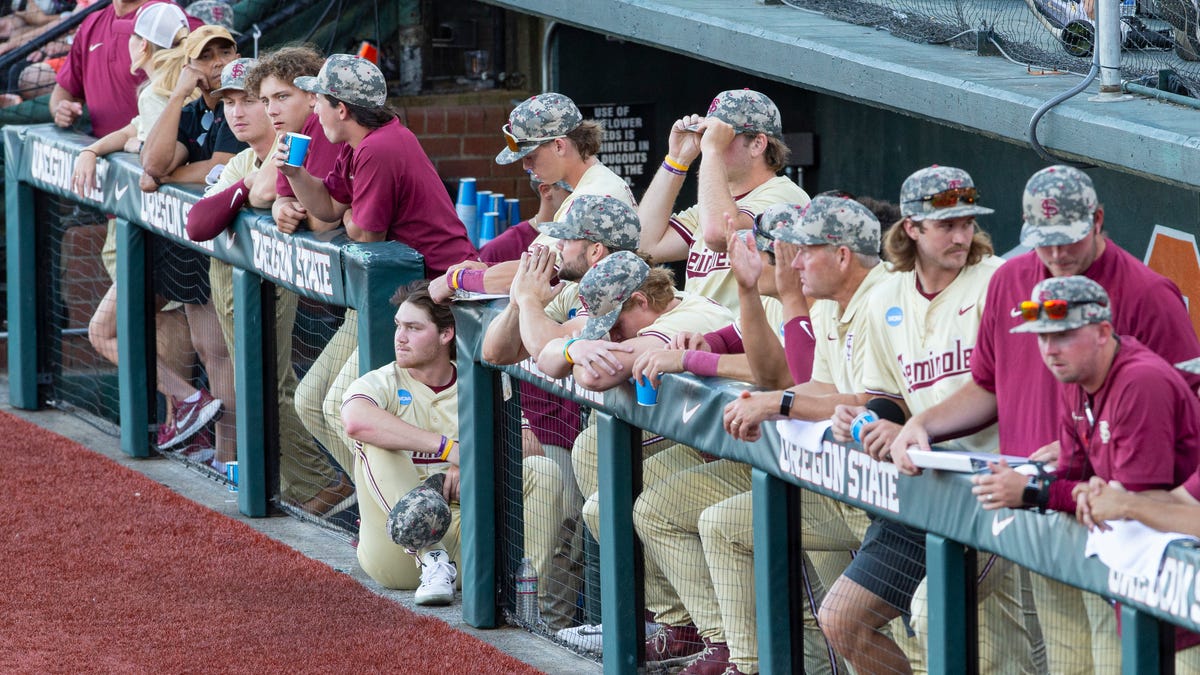
FSU baseball’s Link Jarrett talks ejection, Seminoles comeback regional title win
FSU baseball’s Link Jarrett talks ejection, Seminoles comeback regional title win
Florida State baseball’s season ended in heartbreak after Oregon State beat the Seminoles 14-10 in the winner-take-all game three of the Corvallis Super Regional.
Nearly 3,000 miles away from home, the No. 9-seeded Seminoles (42-16) battled No. 8-seeded Oregon State with a berth to the College World Series in Omaha on the line. In a series between two college baseball heavyweights, the Beavers emerged victorious, while FSU begins its journey back to Tallahassee with questions of what could have been.
Over the 28 innings played at Goss Stadium, three innings seemingly were the difference in the series.
FSU gave up 16 runs over three crucial, season-defining innings in the super regional, and that proved to be the difference between a second consecutive trip to Omaha for the first time in over two decades and a heartbreaking flight home to Tallahassee for the Seminoles.
“They played better than we did. I felt like there were three innings, the ninth (game one), the first, and the third (game three) that we could not escape,” FSU head coach Link Jarrett told reporters postgame. “The game revolves around the big inning, and those three were the difference in this series.”
The ninth inning of game one handed Oregon State control of the series
It looked like the Seminoles had sealed a game one victory, leading Oregon State 4-1 going into the ninth with a red-hot Joe Charles on the mound on Friday night.
Fears of a leadoff double leading to a rally seemed to shrink after two quick outs recorded by Charles. However, a five-pitch walk and a pair of singles later dramatically loaded the bases and loosened the Seminoles’ grasp on a victory.
Charles faced Jacob Kreig, who was 1-for-3 with a double to that point of the game, and the first pitch he delivered ran to the backstop and scored a Beaver runner from third base.
The resilient Charles battled back and worked into a 2-2 count, and down to their final strike, Kreig launched a two-run single to tie the game, swinging momentum in favor of the Beavers. The hit ultimately forced extra innings, and after the Seminoles went down 1-2-3 in the top of the 10th, Oregon State walked it off to snatch a game one victory, and more importantly, control of the series.
Since the NCAA implemented super regionals in 1999, the winners of game one of the best-of-three series had gone on to win the series 158 of 200 times, a 79% win rate.
Two home run filled innings ended FSU’s season in Corvallis
The Seminoles tested the odds with a 3-1 win on Saturday, anchored by quality pitching from Jamie Arnold and Peyton Prescott to force a winner-takes-all game.
With all to play for in game three, it looked like the Seminoles had made an early statement of intent as Max Williams launched a two-run home run in the top of the first on Sunday to give FSU a quick 2-0 lead.
Coming off a career-high eight innings pitched vs. Mississippi State, Wes Mendes toed the rubber with hopes of delivering something similar in Corvallis.
However, five hits, two home runs and seven runs later, Mendes exited the game after less than an inning pitched, and a touchdown allowed in the first inning. For the second time in the series, the Beavers had snatched away the momentum from FSU in dramatic fashion.
“This was built around stating pitching, and Wes had been fighting an illness this week, the travel, and the different allergy stuff that’s going on out here for him, he didn’t look like it was as good as I’ve seen it,” Jarrett said.
“You have to have command of secondary pitch. We were trying to get him through it to see if he can find one of the secondary pitches, and you have an all-right-handed lineup. It seemed like if he could get that changeup going, that changeup’s pretty good. But they were on it, and we could not get out of it. That was damage.”
While jarring, a 7-2 lead didn’t feel insurmountable for the Seminoles, and a second inning Chase Williams home run proved FSU wasn’t going to roll over without landing a few counter blows.
But after delivering a staggering right hook in the first inning, the Beavers landed a knockout punch in the third with six runs scored, including a grand slam and a two-run home run to put the game out of FSU’s reach, despite their best comeback efforts.
The Beavers hit four home runs in the two innings, and scored six runs with two outs, with 11 of the 14 runs the team scored coming on the long ball.
The two innings counteracted what was FSU’s best offensive performance of the weekend as the Seminoles outhit their opponent 17-12, and scored runs in all but three innings, and held Oregon State scoreless after the fourth.
And FSU wasn’t without its opportunities to tie the game, as 10 runners were left on base, including two innings that ended with the bases loaded.
Ultimately, missed opportunities and three innings of poor pitch execution out of the 28 innings played in the series sent the Seminoles home, and not to Omaha.
“We fought, we had chances, believe it or not. This game, you could have looked up, and this thing could have been 14-14, and still going,” Jarrett said. “But some of the at-bats, some of those moments, we needed to do a little bit more, and we needed a crooked number.”
“And we were scoring… but we needed that big blow, that big one, and we didn’t get it.”
Liam Rooney covers Florida State athletics for the Tallahassee Democrat. Contact him via email at LRooney@gannett.com or on Twitter @__liamrooney
Oregon
Oregon voter rolls case highlights national confusion over American Samoans’ citizenship status
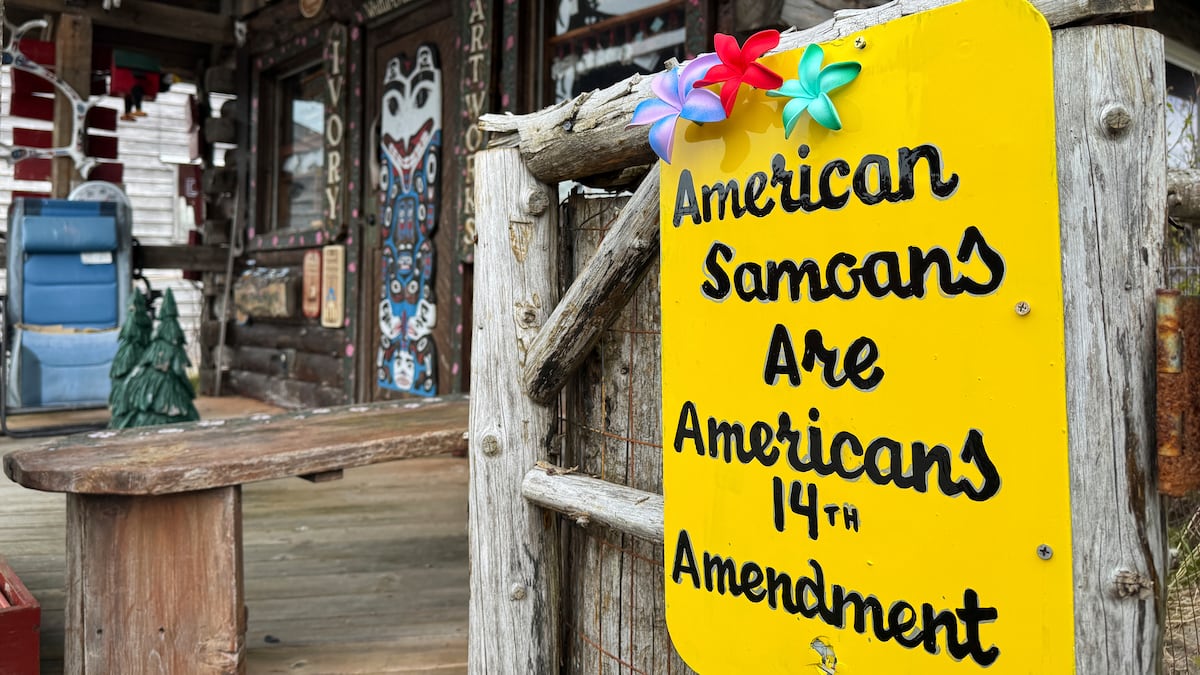
The unique situation of American Samoans has caused confusion across several U.S. states, including Oregon, where officials inadvertently registered nearly 200 American Samoan residents to vote when they obtained driver’s licenses under the state’s motor-voter law.
Of those, 10 cast ballots in an election, according to the Oregon Secretary of State’s office. Officials there determined the residents had not intended to break the law and no crime was committed.
“We pay taxes, we do exactly the same as everybody else that are U.S. citizens,” said Tupe Smith, an American Samoan charged in a similar case in Alaska. “It would be nice for us to have the same rights as everybody here in the states.”
The situation in Oregon reflects broader national confusion stemming from the legal classification of American Samoans as U.S. nationals rather than U.S. citizens — the only U.S. territory whose people are not granted birthright citizenship.
A sign supporting citizenship for American Samoans is posted outside the Log Cabin Gifts store on the waterfront in Whittier, Alaska, May 13, 2025.
Mark Thiessen / AP
American Samoans are entitled to U.S. passports and can serve in the military. Men must register for the Selective Service. They can vote in local elections in American Samoa but cannot hold public office in the U.S. or participate in most U.S. elections.
The legal and cultural questions around this status also resonate within Oregon’s American Samoan community.
Siniva Bennett, board chair of the Samoa Pacific Development Corporation, a Portland-based nonprofit, explained why many in the territory have grown wary of birthright citizenship.
“We’ve been able to maintain our culture, and we haven’t been divested from our land like a lot of other indigenous people in the U.S.,” Bennett said, referring to the potential threat to communal land ownership laws if citizenship were imposed.
Trump administration challenges Oregon over voter rolls in lawsuit
Although supporters of automatic citizenship say it would benefit the estimated 150,000 to 160,000 American Samoan nationals living in states such as California, Hawaii, Washington, Oregon, Utah and Alaska, others worry about unintended consequences. The debate reflects a broader tension between equal rights and cultural preservation.
In Alaska, confusion leads to criminal charges
The legal ambiguity continues to surface in unexpected places, like Whittier, Alaska, a cruise-ship stop squeezed between glacier-packed mountains and Prince William Sound. It’s so small that nearly all of its 260 residents live in the same 14-story condo building — yet it became the unlikely setting of an unprecedented noncitizen voter fraud case.

The 14-story Begich Tower is seen in Whittier, Alaska, May 13, 2025. A majority of the town’s residents live in the condo.
Mark Thiessen / AP
Alaska prosecutors are pursuing felony charges against 11 residents of Whittier, most of them related to one another, saying they falsely claimed U.S. citizenship when registering or trying to vote. The defendants, all born in American Samoa, say they believed they were eligible.
“To me, I’m an American. I was born an American on U.S. soil,” said firefighter Michael Pese, one of those charged in Whittier. “American Samoa has been U.S. soil, U.S. jurisdiction, for 125 years. According to the supreme law of the land, that’s my birthright.”
The case began in 2023 when Pese’s wife, Tupe Smith, ran unopposed for a local school board seat. After winning with about 95% of the vote, she was arrested and charged.
Oregon elections officials refer cases of possible noncitizen voting to state DOJ
She explained to officers that she knew she wasn’t allowed to vote in U.S. presidential elections, but thought she could vote in local or state races. She said she checked a box affirming that she was a U.S. citizen at the instruction of elections workers because there was no option to identify herself as a U.S. national, court records say.
“When they put me in cuffs, my son started crying,” Smith told The Associated Press. ”He told their dad that he don’t want the cops to take me or to lock me up.”
Later, Pese and eight relatives — along with one man from their village in American Samoa — were also charged. Advocates say they were targeted despite a lack of criminal intent.
“There is no question that Ms. Smith lacked an intent to mislead or deceive a public official in order to vote unlawfully when she checked ‘U.S. citizen’ on voter registration materials,” Neil Weare, one of Smith’s attorneys and co-founder of the Washington-based Right to Democracy Project, wrote in a brief to the Alaska Court of Appeals last week, after a lower court judge declined to dismiss the charges.

Michael Pese and his wife, Tupe Smith, pose for a photo with their son Maximus and daughter Cataleya in Whittier, Alaska, May 13, 2025.
Mark Thiessen / AP
Critics argue the prosecutions are politically motivated amid false claims from President Donald Trump and others that noncitizen voter fraud is widespread. Even state-level investigations have found voting by noncitizens to be exceptionally rare.
In Hawaii, American Samoans have faced similar confusion.
Sai Timoteo, who was born in American Samoa, ran for the state Legislature in 2018 before learning she wasn’t allowed to hold public office or vote. She had always considered it her civic duty to vote, and the form on the voting materials had one box to check: “U.S. Citizen/U.S. National.”
“I checked that box my entire life,” she said.
She also avoided charges, and Hawaii subsequently changed its form to make it more clear.
A simple truth is at the root of many false election claims: Voter rolls are imperfect
In Alaska, the confusion reached such a level that the Pacific Community of Alaska reached out to the Alaska Division of Elections in 2021 and 2022 to ask whether American Samoans could vote in state and local elections.
Neither time did it receive a direct answer, said Tafilisaunoa Toleafoa with the organization.
“It is my hope that this is a lesson learned, that the state of Alaska agrees that this could be something that we can administratively correct,” Toleafoa said. “I would say that the state could have done that instead of prosecuting community members.”
Legacy of colonialism and exclusion
The root of the issue stretches back to the colonial legacy of American Samoa.
In the 19th century, the U.S. secured part of the Samoan archipelago as a naval refueling station. Over time, Puerto Rico, Guam, the U.S. Virgin Islands and the Northern Mariana Islands gained birthright citizenship — but American Samoa did not.

FILE – A sailing ship is seen in the harbor at Pago Pago, American Samoa, in July 2002.
David Briscoe / AP
Congress considered it for American Samoa in the 1930s, but declined. Some lawmakers cited financial concerns during the Great Depression while others expressed patently racist objections, according to a 2020 article in the American Journal of Legal History.
In 2021, the 10th U.S. Circuit Court of Appeals declined to extend automatic citizenship to those born in American Samoa, saying it would be wrong to force citizenship on those who don’t want it. The Supreme Court declined to review the decision.
Several jurisdictions across the country, including San Francisco and the District of Columbia, allow people who are not citizens to vote in certain local elections.
___
Bohrer reported from Juneau, Alaska, and Johnson from Seattle. Claire Rush in Portland, Oregon, and Jennifer Sinco Kelleher in Honolulu contributed to this report.
-

 Politics1 week ago
Politics1 week agoMichelle Obama facing backlash over claim about women's reproductive health
-

 West3 days ago
West3 days agoBattle over Space Command HQ location heats up as lawmakers press new Air Force secretary
-

 Finance1 week ago
Finance1 week agoHere's what will boost your feeling of financial well-being the most, researchers say
-

 Technology1 week ago
Technology1 week agoWhy do SpaceX rockets keep exploding?
-

 World1 week ago
World1 week agoTwo killed in Russian attacks on Ukraine before possible talks in Turkiye
-

 Kentucky1 week ago
Kentucky1 week agoHow Ole Miss baseball’s pitching options will factor in elimination game vs Western Kentucky
-

 World1 week ago
World1 week agoNcuti Gatwa Bids Doctor Who Farewell as Finale Ends With a Most Surprising Twist — Grade It!
-

 News1 week ago
News1 week agoTrump administration continues to target international students. What to know and what could be next.
